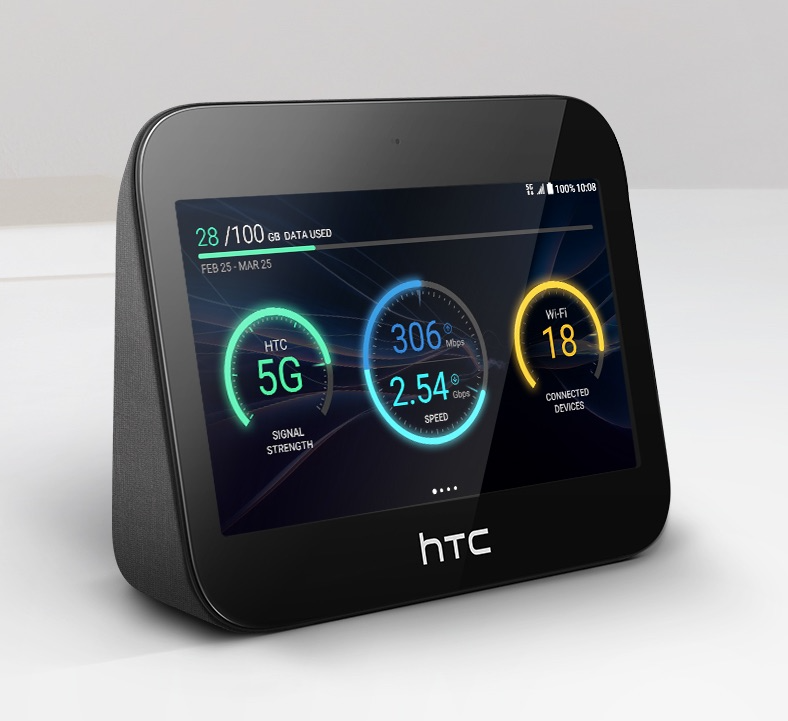HTC 5G Hub Teardown

I bought a refurbished HTC 5G Hub to see if I could get a 5G hotspot and if it could act as a secondary internet connection if my main connection drops. The device runs Android 9 (Pie) and otherwise operates as a normal Android phone. Except it has an Ethernet port.
The picture in the header shows a custom HTC homescreen app. One can also switch to full Android mode and use it like a phone.

Once it was on the mobile network, it worked pretty well. A full 4G connection, pushing about 50 mbps both up and down stream. It never had a 5G signal. The device is designed for Sprint (now T-Mobile). The radio bands used for 5G (N71) are different than the network tied to the provider of the SIM card.
Also, the Hub refused to connect over the ethernet connection. Even connected to a 10/100/1000 ethernet switch, the ethernet port refused to work. Here's a shot of the setup to watch the traffic coming from the ethernet port.

As you can see on the laptop screen (running Wireshark), there is no traffic. There isn't even a layer 1 signal coming out of the device, meaning no lights on the switch. As I already have a 4G hotspot or two, let's see what we can do to get the Ethernet port working. Others have reported that their ethernet port was running a DHCP server for the range 192.168.2.1/24. I noted the lack of IPv6 here. However, there is no ability in this modified Android to setup anything on the Ethernet port.
Well, I could try to return it and see if I just have a defective unit. Or, I could tear it apart. As the title says, we tore it apart. All the screws are Torx T5 sized, so it's pretty easy. Start with the screw next to the SIM card slot labelled VOID. And then you can carefully pull apart the rest.
And for fun, the images are in reverse order (individual parts to assembled unit). I didn't document each individual image, but you can look for yourself (start at the bottom and scroll up if you like). Click on the images for a high resolution image gallery. I used a kitchen rag (Marley's Monsters Unpaper Towel) to keep the screen from getting scratched up on the workbench.
It turns out, in order to separate the logic board from the battery armature, I had to destroy the ribbon connector. I found another way to detach the ribbon connector, but it was already destroyed at this point. The device won't work due to the destroyed ribbon connector, so I kept tearing it apart. I decided getting out the dremel and cutting the armature apart was too much, so the tear down stops there. It looks like there are some JTAG ports on the main board, so maybe there's hope to pull firmware images from the device.
There's a 32GB SanDIsk module and SK hynix memory chip on board. That's where to focus for the JTAG data extraction.
I still don't know if the Ethernet port is defective.
The full photo album of pictures is available, https://photos.lewman.com/HTC-5G-Hub-Teardown/
Thanks for reading this far. iFixit is a great site to learn more about device tear downs and what's inside your electronics. And they do a far better job of documenting the process than I.